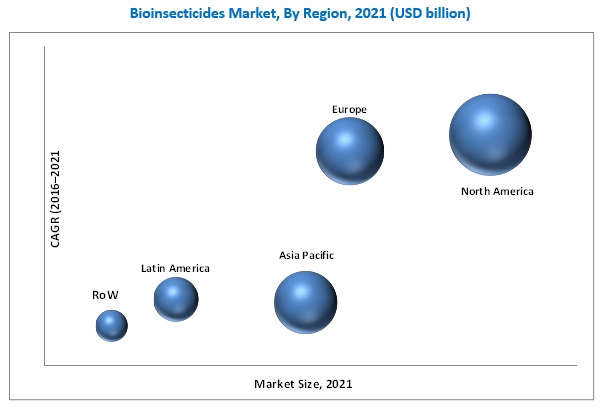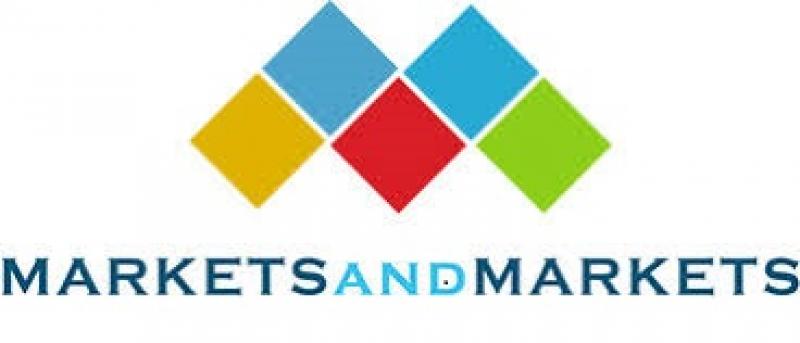Rise in Insect Attacks Boosting the Growth of the Bioinsecticides Market
The report "Bioinsecticides Market by Type (Bacteria Thuringiensis, Beauveria Bassiana, Verticillium Lecanii & Others), Mode of Action (Predators, Parasites & Pathogens, Bio-Rationals), Mode of Application, Formulation, Crop Type, & by Region - Global Trends & Forecast to 2021", The bioinsecticides market is projected to reach a value of USD 3.18 Billion by 2021, at a CAGR of 18.3% from 2016 to 2021. The market is driven by factors such as increasing levels of pest attacks due to climatic change and implementation of biological technologies for pest control.

The following are the major objectives of the study:
- To define, segment, and project the size of the bioinsecticides market with respect to its type, origin, crop type, mode of application, formulation, mode of action, and key regions
- To provide detailed information about the major factors influencing the growth of the market (drivers, restraints, opportunities, and industry-specific challenges)
- To strategically analyze the micromarkets with respect to individual growth trends, future prospects, and contribution to the total market
- To analyze opportunities in the market for stakeholders and provide details of the competitive landscape for market leaders
- To provide an analysis of R&D spending and funding activities in the bioinsecticides market
- To project the size of the market, in terms of value (USD million) and volume (KT) in the key regions, namely, North America, Europe, Asia Pacific, Latin America, and Rest of the World (RoW)
- To strategically profile the key players and comprehensively analyze their core competencies
- To analyze competitive developments-new product launches, acquisitions, investments, expansions, partnerships, agreements, joint ventures, and product approvals-in the bioinsecticides market
Download PDF Brochure: https://www.marketsandmarkets.com/pdfdownloadNew.asp?id=53876759
Verticillium lecanii is projected to be the fastest-growing bioinsecticide during the period 2016–2021.
Verticillium Lecanii bioinsecticides are helpful to the crops in a way that they detoxify the soil and fight the root diseases and provide stability to the soil system. They help in nitrogen fixation, phosphate solubilization, iron sequestration, and phytohormone-level modulation in crops. Due to these factors, the Verticillium lecanii segment dominates the bioinsecticides market.
Fruits & Vegetables Segment is the Major Crop Type Application in the Bioinsecticides market
Fruits & vegetables accounted for the largest share of the crop type application of bioinsecticides in 2015. With the increasing consumption of fruits & vegetables and increasing demand for tropical and exotic fruits & vegetables in the developing countries globally, this segment is likely to witness growth by the year 2021. The others segment that includes turf & ornamental crops accounted for the second largest share in 2015.
Speak to Analyst: https://www.marketsandmarkets.com/speaktoanalystNew.asp?id=53876759
North American Region Dominated the Bioinsecticides Market in 2016
The North American region was the largest market for bioinsecticides in 2015. Countries such as the U.S., Canada, and Mexico are major producers of fruits & vegetable crops. The rise in organic & environment-friendly farming practices has increased the demand for bioinsecticides especially in the U.S. The market in Canada has been driven by the rise in the cost of fertilizers & pesticides that have led to high usage of bioinsecticides. Brazil and Argentina are also active countries for the usage of bioinsecticides. Countries in Asia-Pacific are at the growth stage in this market. China is the major country followed by India, Australia, and Indonesia.
This report includes a study of marketing and development strategies, along with the product portfolio of leading companies. It includes the profiles of leading companies such as Valent BioSciences Corporation (U.S.), Syngenta AG (Switzerland), Bayer CropScience AG (Germany), E. I. du Pont de Nemours and Company (U.S.), Novozymes A/S (Denmark), and Koppert B.V. (The Netherlands).
